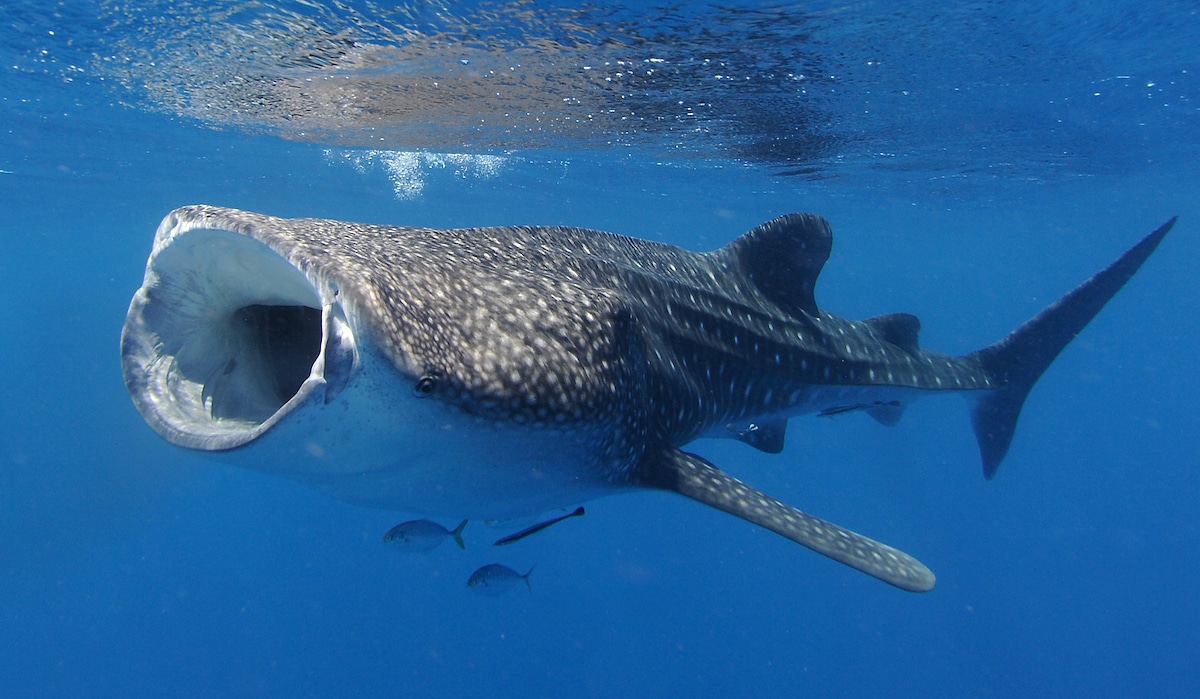

Whale sharks are the largest fish in the ocean, but even they can’t go up against a large shipping vessel and emerge unscathed.
A new study published in the Proceedings of the National Academy of Sciences Monday found that international shipping may be a “cryptic” cause of death for this endangered species.
“The maritime shipping industry that allows us to source a variety of everyday products from all over the world, may be causing the decline of whale sharks, which are a hugely important species in our oceans,” study co-author and University of Southampton Ph.D. researcher Freya Womersley said in a press release.
Whale sharks can grow to be up to 20 meters (approximately 66 feet). However, these gentle giants mainly feed on zooplankton. This means that they are very important for ocean ecosystems because they help control the plankton population. However, their population has declined by more than 50 percent in the last 75 years, Womersley and fellow co-author and University of South Hampton and Marine Biological Association (MBA) senior research fellow David Sims wrote in The Conversation. In 2016, they were officially declared endangered.
However, the reason for this decline is a bit of a mystery. Accidental or purposeful fishing is not believed to be a cause because the animals have been protected by international trade bans since 2003 and all whale shark fishing has ended. Scientists suspect that vessel collisions could be a problem because whale sharks often feed just below the ocean’s surface, putting them at risk for a crash. This is hard to determine, though, because a whale shark hit by a large ship would simply sink, leaving no evidence.
To figure out if ship collisions are really a problem for whale sharks, the MBA-led Global Shark Movement Project tracked satellite data covering the movement of nearly 350 whale sharks, the press release explained. Researchers then compared those movements with the movements of shipping fleets large enough to strike and kill a whale shark. What they found was that 92 percent of the whale sharks’ horizontal movements and 50 percent of their vertical movements intersected with shipping traffic, according to the study.
Further, almost a third of the places where whale sharks concentrated were in areas with the highest risk of collision. The scientists also found evidence for accidents. More often than the researchers had predicted, they found that a shark’s last-tracked location was traced to a high-traffic area. This happened more frequently than could be explained by technical failures.
“Incredibly, some of the tags recording depth as well as location showed whale sharks moving into shipping lanes and then sinking slowly to the seafloor hundreds of metres below, which is the ’smoking gun’ of a lethal ship strike,” Sims said in the press release. “It is sad to think that many deaths of these incredible animals have occurred globally due to ships without us even knowing to take preventative measures.”
Now that scientists are aware of this “hidden cause of death,” Sims and Womersley outlined steps that could be taken to remedy the situation in The Conversation:
- The International Maritime Organization (IMO) could establish a database for recording collisions between ships and endangered species in order to determine where they are happening and inform protections.
- The IMO could adapt regulations for sharks similar to those it uses for whales, such as requiring ships to travel more slowly.
“Collectively we need to put time and energy into developing strategies to protect this endangered species from commercial shipping now, before it is too late, so that the largest fish on Earth can withstand threats that are predicted to intensify in future, such as changing ocean climates,” Womersley said in the press release.

 233k
233k  41k
41k  Subscribe
Subscribe 